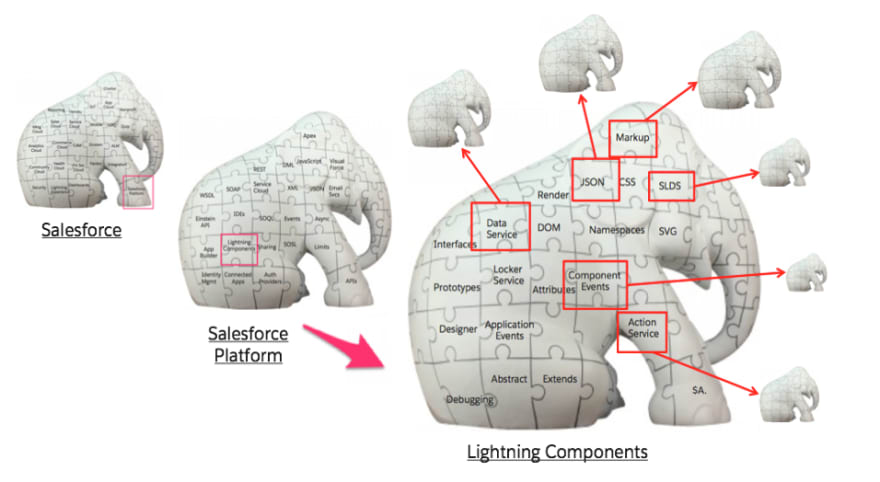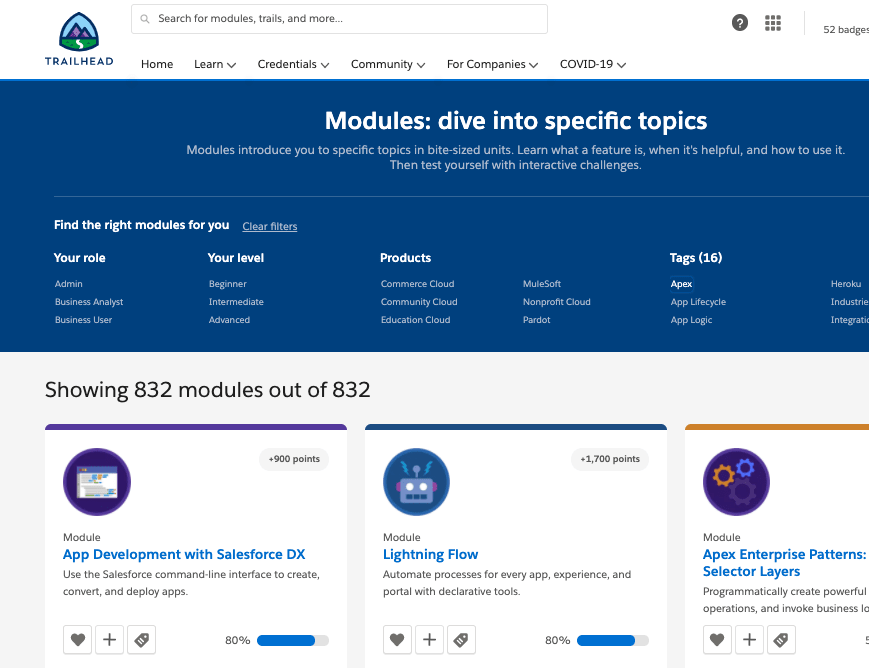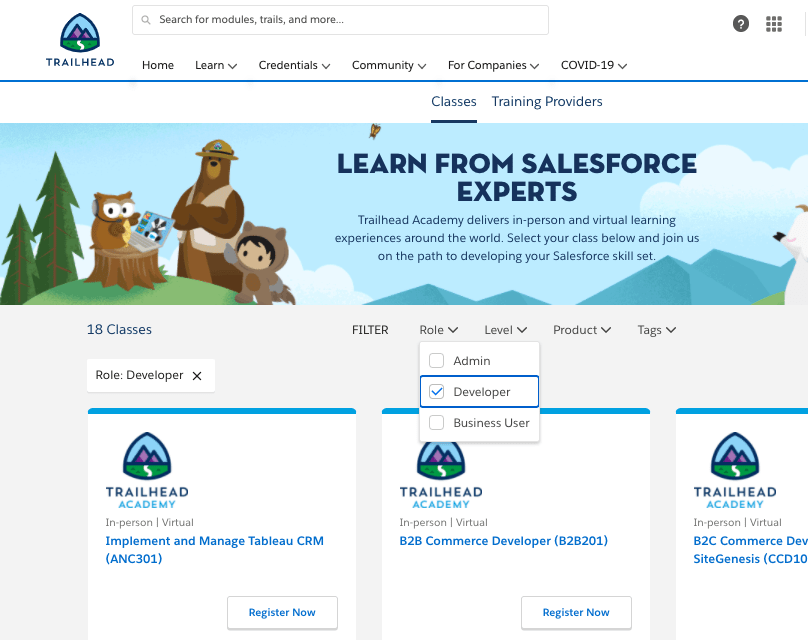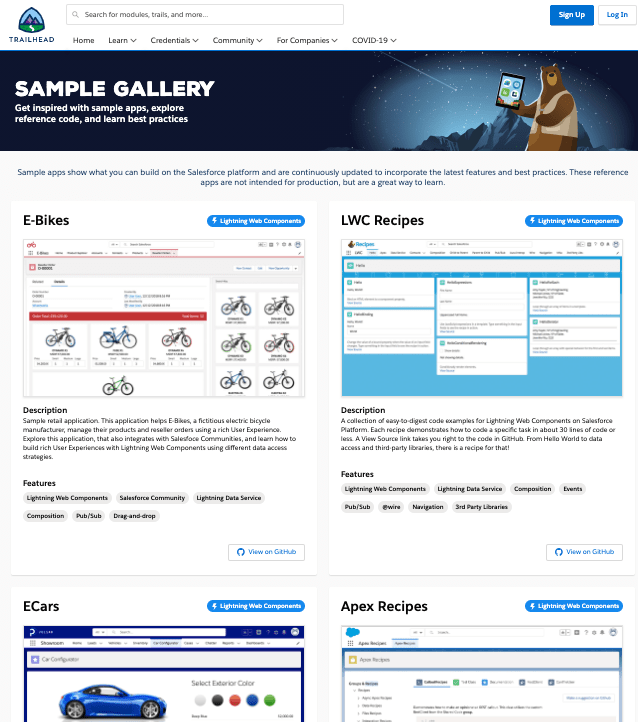Putting it All Together - Learning the Salesforce Platform
Throughout my previous posts, I’ve explored the depth and breadth of the Salesforce Platform, and the growing opportunities for developers that fit their various technical skills, experience, and domain interests.
However, to successfully step into a platform that is constantly growing requires access to readily-available content plus opportunities to deeply explore the many technical aspects of the platform.
So, where should you start?
How Do You Eat an Elephant?
When posed with this child’s riddle, we like to say, “...one bite at a time”. Breaking down any enormous challenge into small bites is always best, and that’s certainly the case with mastering Salesforce. Each bite you take from the Salesforce elephant typically results in another elephant, so you have a large meal in front of you.
This effort also requires that you choose an efficient strategy for targeting your knowledge acquisition. As your time is limited, your learning targets are almost unlimited. Therefore, carefully strategizing your learning efforts will maximize success.
A Smorgasbord of Learning Content
As the platform has grown, so has the volume, style, and quality of related educational content. Once you have decided what aspects of the platform you wish to explore, and which apps and clouds best align with your skills and interests, you’ll need to learn what’s available to support your educational journey.
You’ll then want to focus your efforts to match available educational content with your particular style of learning to promote maximum success, as some content will be more or less effective based on your learning preferences and what works best for you.
For example, perhaps you prefer to read or scan documentation and books. Or maybe you learn best by watching eLearning video presentations, or watching or listening to technical conversations via video or audio podcasts. Some developers learn best while immersed in a classroom with an expert instructor to hammer with questions while working together with peers chewing through technical exercises. And others just want to beat on the technology late at night, to see what works and what doesn’t. Salesforce offers all of these options; you just have to pick.
Let’s look at some of the most popular ways to learn Salesforce in more detail:
- Trailhead
- Developer tools
- Trailhead Academy
- Developer documentation
- Official blogs
- Salesforce communities
It All Begins at the Trailhead
Trailhead made its first appearance back in 2014, at the annual Dreamforce conference. A hybrid between documentation and tutorial educational content, Trailhead is an ever-growing catalog of Modules, Projects and Superbadges that center around various Salesforce-related technical concepts and business topics. Some are bite-sized, others are of medium complexity, and still others can take many hours or days to complete. These learning chunks are categorized and gamified, providing a fun and free incentivized self-directed learning model.
The catalog is searchable by role, level, product, or concepts, and the Trailhead team also creates curated learning paths called Trailmixes. While Modules and Projects provide quizlets and hands-on exercises to test new knowledge. Superbadges provide more complex real-world style project challenges that really test your skills. Learners collect points and are awarded badges along the way.
The catalog continues to grow, and at a minimum, you’re bound to find solid content on whatever topic, concept, or product you’re trying to learn about. However, while broad in scope, you may find that some developer specific content does not go as deep as you may need.
Free Developer Tools (Mostly)
I believe that one of the smartest things Salesforce ever did was to provide a free “Developer Edition” version of its core product that allows developers to experiment with most features and extensions of the software. These Developer ‘orgs’ can be self-provisioned in minutes, and developers are free to have as many as they want.
They don’t expire (unless left inactive for six months) and they are fantastic for experimentation, learning, and prototyping. Developers can also launch special versions called “Playgrounds” for working through Trailhead content. Furthermore, the technology beneath the Trailhead educational model leverages the metadata architecture allowing for sophisticated assessment of hands-on development exercises built with these orgs.
The DevOps tools such as the SalesforceDX Command Line Interface (CLI) and extensions that connect Visual Studio Code with a core Salesforce org are also freely available. However, it is important to note that there is a marked difference between core versus non-core aspects of the platform when it comes to the availability of learning resources, tools, and developer or trial software.
You may recall from my prior post that the core clouds and apps are those built on the original Salesforce multi-tenant, metadata-driven architecture. The non-core clouds and apps, built on acquired proprietary technical architectures, typically aren’t as flexible or as readily available for experimentation and self-directed learning. However, in most instances, developers can acquire trial versions for experimentation, and student orgs are available when attending a Trailhead Academy class.
Trailhead Academy
For those who need to take a deeper dive and want an immersive learning experience in a more traditional training model, Trailhead Academy provides over 50 different classes. These cover everything from Administration or Programming Lightning Web Components to B2B Commerce or Architectural Concepts, as well as many of the non-core apps, such as Tableau or Marketing Cloud. You can immerse yourself with an expert Salesforce-certified instructor and a class full of peers for deep content in an interactive learning experience that lasts from one to five days.
Developer Documentation
Under the Trailhead umbrella, the technical documentation team regularly maintains and updates an enormous volume of technical Developer Documentation both broad and deep covering all aspects of the core platform and many of the non-core apps and clouds. Non-core apps often maintain additional documentation found at other portals that will likely be integrated into the core documentation portal over time.
Want to learn about Apex? Read the Apex Developers Guide as it serves as the Bible on the language. It is well written with clear explanations and important tidbits, and also provides thousands of pages of language reference.
Want to dig into Lightning Web Components? The documentation provides not only a reference guide, but interactive tools allowing developers to experiment with the out-of-the-box component library and this guide allows you to explore the Salesforce Lightning Design System (SLDS) styles. You’ll see the same depth and quality in detailed reference guides for all key technical topics, products, languages, and features—giving you a lot to chew on!
Official Blogs, Articles, and Apps from Developer Advocates
Looking for perspective from expert developers who’ve been over the mountain? Drill into the Developer Blogs and the Developer Podcasts where the internal Developer Advocates and many well-respected developer and architect community members share their perspective in well-written, technical articles or interviews discussing the latest technical challenges or new features. Tune in to the Trailhead Live portal for live-streaming or on-demand presentations, or the Salesforce Developers Youtube channel for tons of recorded content, (check out the Developer Quick Takes playlist as an example.) The Events and Webinars page also lets you know what's scheduled for broadcast..
Learn development best practices from those same development experts who regularly churn out open-source projects and applications deployed to Github and shared in the Sample Gallery for anyone to download and dissect.
Communities, Blogs, Books and Podcasts
Last but certainly not least, Salesforce is famous for its Ohana—a community that extends from its employees to its customers, partners, developers, and community members. The company actively promotes a truly collaborative learning culture adopted by its customer base.
This community is always available to support you with learning opportunities (as well as opportunities for you to share your own knowledge) when ramping on the platform or just trying to get by in your day-to-day work.
There are over 200 Most Valuable Player (MVP) members. These customer technologists who have been elected by their peers based on their high visibility and community generosity, willingly share their technical knowledge online or by presenting at community group meetings and conferences. Many are also well-known for creating online excellent technical and educational content in the form of blogs, books, or eLearning courses on platforms such as Pluralsight.com or Udemy.com.
And of course, Salesforce hosts its own Trailblazer Community where hundreds of thousands of customers come together, segmented into various collaborative online groups. And you’ll find plenty of other channels and communities on StackExchange, Slack, LinkedIn, Facebook, or Youtube. The list goes on and on...
Your Journey Has Just Begun
I could continue, but I don’t think it’s necessary. Opportunity abounds for all sorts of developer skillsets and experience, spanning across a wide universe of apps and clouds, to build and maintain innovative technology to support an ever-growing customer base.
So I invite you to join the most generous and skilled developer community I’ve ever experienced in any technical domain during my 30+ years in the industry. We’re all waiting to welcome you, willing to share our knowledge and experience with you, and looking forward to learning from your expertise and perspective. And Salesforce is doing everything it can to make learning the technical aspects of the platform even easier, so you can join the ranks of those who can best help their customers maximize their success.
What else do you need? Just take the first step and jump in.
Thanks to Don Robins for his kind permission to publish this article.










Oldest comments (2)
Nice series, enjoyed reading it and I sent it over to a friend that is looking to get into the SF eco system. Thanks for this write up!
👏🙌🎓 Thanks for sharing an amazing post, Michael! It's a valuable resource for anyone looking to enter the Salesforce ecosystem and upskill in this field.🚀 I found your practical tips, like leveraging Trailhead and learning from the Salesforce developer community, to be especially helpful. Great work!!👍
👉 Additionally, For those looking interested in getting started with Salesforce platform, I highly recommend reading the article Quick Start Guide to Salesforce.It provides valuable tips and resources to help you get started quickly and make the most of this powerful platform.